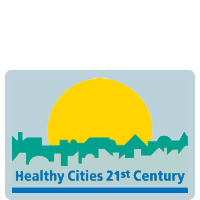The examples below highlight how putting planning at the corporate centre can help an authority to focus on integration and meet a range of aspirations that most councils share. They are valuable food for thought for chief executives and senior officers in the newly forming local authorities in Northern Ireland:
- Driving local authority performance
- Engaging communities
- Demonstrating councillor leadership
- Working across different levels of government
Driving local authority performance
Coventry City Council, in the West Midlands of England, has appointed a public health practitioner to advise urban and transport planners within the council. But its commitment to integrate across health and the built environment goes much wider than a single post, and is driven by the chief executive, Martin Reeves. Martin believes that local authorities must recognise that achieving health and wellbeing needs to be ‘driven through all of a council’s functions – we have missed a major trick if we do this in a piecemeal way’.
One practical example of this approach is the council’s attempts to build in health and wellbeing from the start to a £350 million development scheme around the city’s airport. Part of the council’s approach is to work with a range of stakeholders to convince them that improving health and wellbeing makes business sense, and should not be viewed simply as something that would be ‘nice to have’.
Martin says:
‘This is a leadership challenge: we must find a way of making the right decision for the place. And the best way to do that is to get staff bonded by the one thing we all care about, which is trying to improve the wellbeing of our people and our places.’
Contact: Angela Hands, Public Health Practitioner (Planning and Transport), Coventry City Council, angela.hands@coventry.gov.uk
Engaging communities to influence public sector spending
Community planning is a central plank of Northern Ireland’s reformed planning system. Increasing people’s sense of participation and control over their local environment is an important element of improving wellbeing (Marmot). Bristol City Council, in collaboration with the University of West of England, the University of Bristol and the NHS, has recently established a team called SHINE (Supporting Healthy Inclusive Neighbourhood Environments).
SHINE aims to combine community engagement, research and innovation to make sure that future development of the city improves health and wellbeing, and social inclusion. The scale ranges from influencing the development of large urban extensions through to making sure that benches and public toilets are available in the right places so that older people can walk comfortably to the shops or park. This work will build on existing innovation with involving communities in decision-making in Bristol, such as the online Traffic Choices tool, which allows residents to have a say in how they would like money spent on traffic schemes locally.
Contact: Marcus Grant, Associate Professor of Healthy Urban Environments, University of the West of England, marcus.grant@uwe.ac.uk
Demonstrating councillor leadership
A recurring finding when examining the factors that contribute to successful integration is leadership by councillors. Elected members at Medway Council, a unitary authority to the south east of London on the North Kent coast, were concerned by the increase in the number of children and young people who were becoming overweight or obese. To investigate this further they set up a task group to review healthy eating among children and young people in the Medway area.
This leadership has led to a collaboration developing between the public health directorate (now within the council) and planning and licensing teams within Medway Council to tackle obesity and to learn from the experiences of others. There is agreement to write some interim planning policy based on local evidence gathered by the public health directorate.
Contact: Scott Elliott, Senior Public Health Manager, Medway Council, scott.elliott@medway.gov.uk
Working across different levels of government
In England two tier areas, the county council is responsible for public health while the district councils are responsible for most planning functions. This replicates to some extent the forthcoming arrangements for Northern Ireland between central government (public health) and the reformed local councils (planning).
Hertfordshire County Council has ten district councils within its area. To facilitate communication between these two levels it has set up a public health board as a sub-committee of the county’s health and wellbeing board. The board acts as a multi-agency forum to enable all parts of the public health system in the county – such as Public Health England, district and county councils, the Police and Crime Commissioner, NHS bodies, and other agencies – to work effectively together.
To assist this joint working the county is also reviewing how it makes public health data available to built environment professionals across the ten districts so that it is as useful and accessible as possible. This has included working with environmental health officers to develop data on air quality, and collaborating with planners to gather relevant evidence on healthy place priorities, such as creating more green space and reducing congestion and pollution.
Contact: Peter Wright, Public Health Partnership Manager, Hertfordshire County Council, peter.wright@hertfordshire.gov.uk


